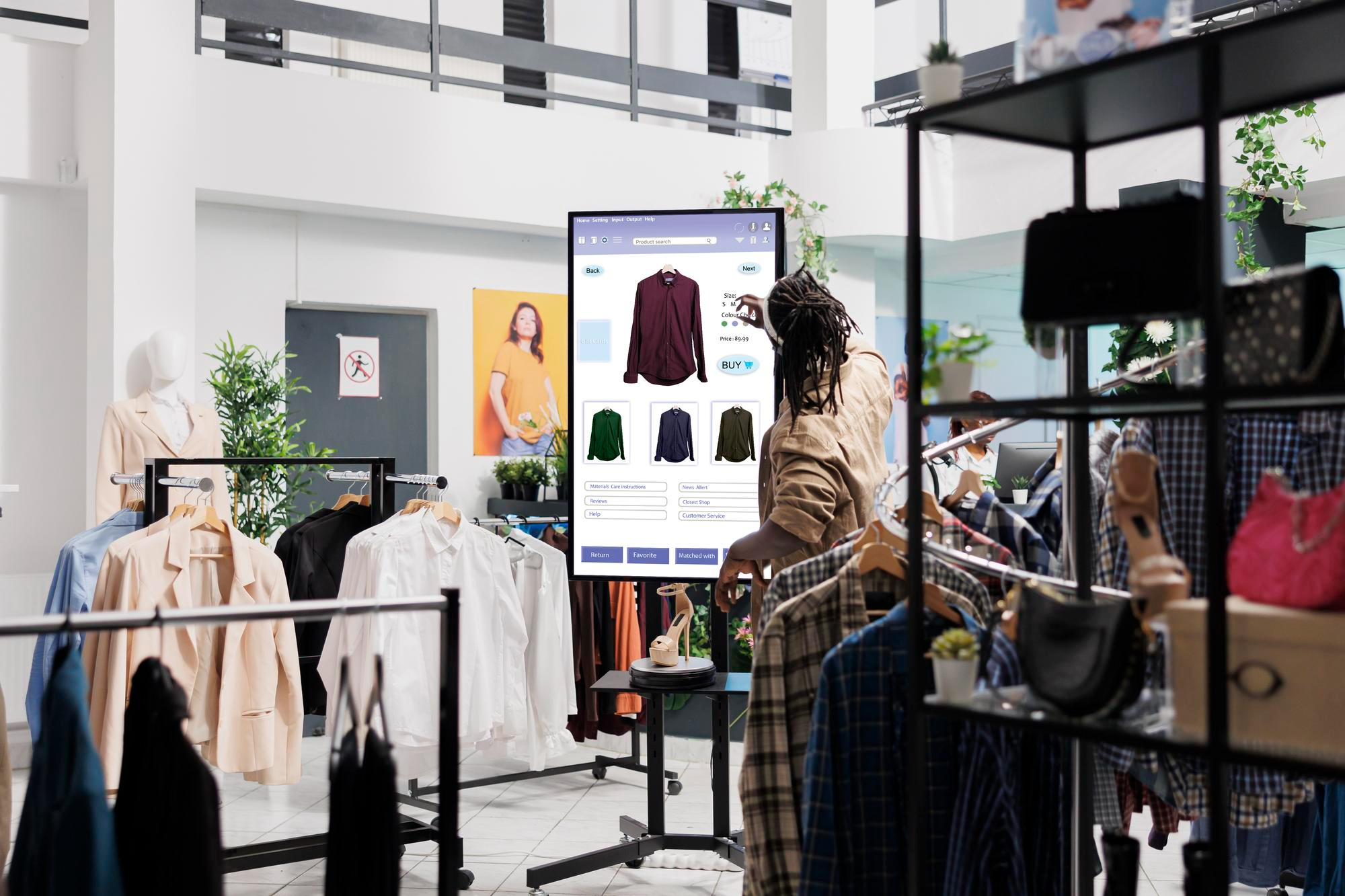

Problems
Our solution

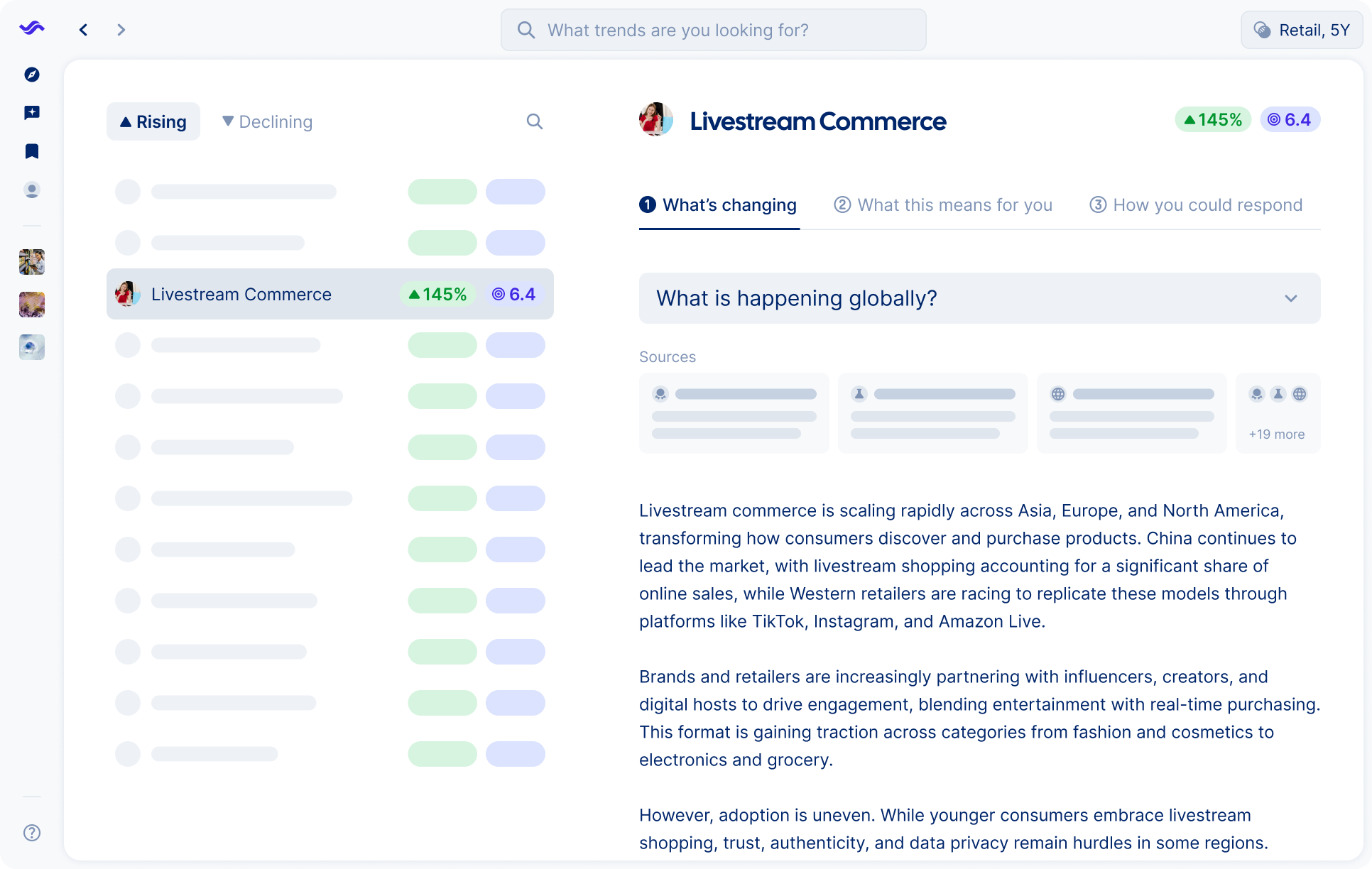
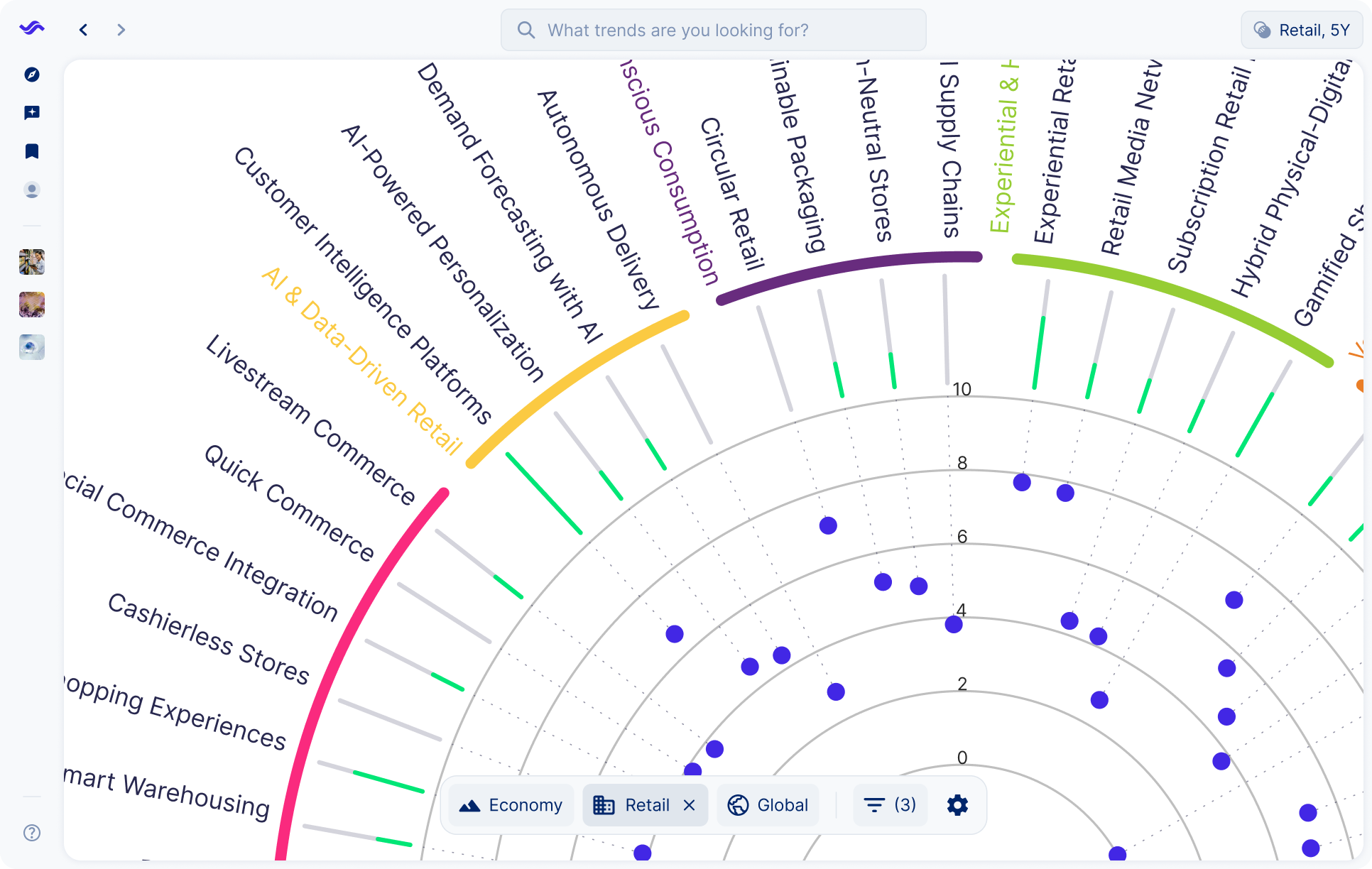


Spot opportunities sooner than anyone else
AI Analyst for retail leaders
See your strategic landscape clearly
Track trends in real time
Key benefits
Strategists trust Trendtracker to turn data overload into instant, actionable insights.
Trends in the industry


Retailers are turning their digital and physical spaces into powerful advertising platforms. By using shopper data and AI-driven targeting, retail media delivers highly personalized campaigns, making it one of the fastest-growing revenue streams in the sector.
Retail media is shifting retailers from being just sellers of products to becoming owners of consumer attention. This creates new revenue channels, strengthens loyalty, and improves margins at a time when traditional retail models are under pressure. At the same time, it demands investment in data, compliance with privacy standards, and new capabilities in digital marketing.
Retailers can capture the opportunity by expanding their retail media networks, integrating loyalty programs with advertising platforms, and partnering with brands for co-created campaigns. Building capabilities in AI-driven targeting and real-time analytics will maximize performance, while aligning with consumer expectations for personalization and trust.


Livestream commerce is turning shopping into entertainment, blending social media, influencers, and real-time purchasing. Platforms like TikTok, Alibaba, and Walmart are leading the charge, making interactive shopping a fast-growing trend across markets.
Livestream commerce shifts retail from transactional to experiential. It drives higher conversion rates, speeds up inventory turnover, and opens new revenue streams by reaching younger and digitally native consumers. At the same time, it requires retailers to build new skills, manage influencer partnerships, and address challenges around trust and sustainability.
Retailers can harness livestream commerce by investing in AI-powered video shopping, training teams to host or support live events, and integrating real-time analytics to optimize sales. Strategic partnerships with influencers and platforms will help expand reach, while embedding livestreaming into omnichannel strategies ensures it supports both growth and customer loyalty.
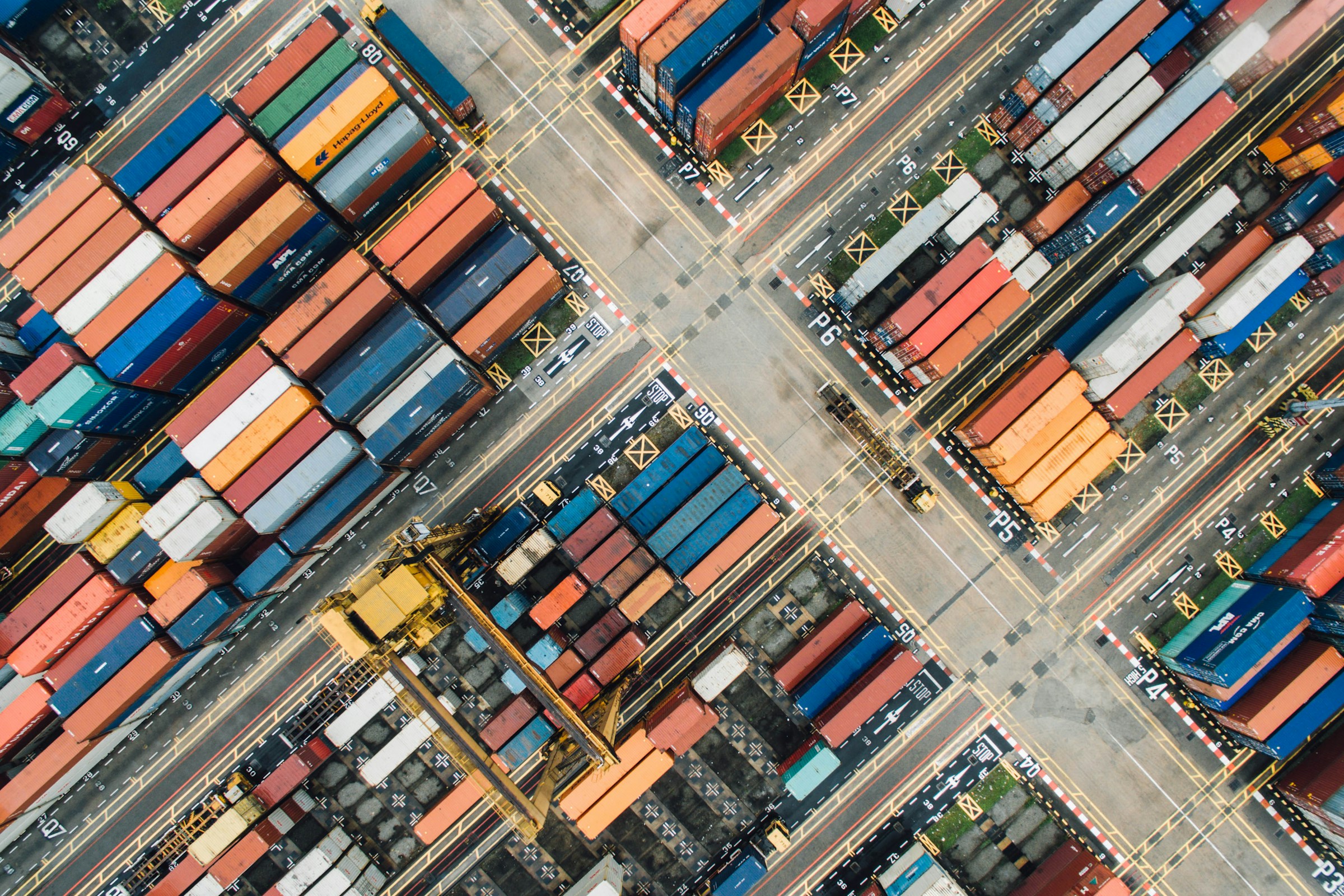

Retailers are moving fast to make supply chains visible end to end. Blockchain is being adopted for tamper-proof traceability, while AI and IoT provide real-time item-level visibility. Consumers are asking for proof of origin and ethics, and regulators are tightening rules on sustainability and product integrity. QR-enabled packaging and digital product passports are becoming common ways to communicate that story.
Transparency is now a competitive differentiator as much as a compliance requirement. Retailers that can verify sourcing and product authenticity win trust and loyalty, reduce fraud, and react faster to disruption. Better visibility improves demand forecasting, inventory accuracy, and on-shelf availability, which lowers costs and lifts service levels across channels.
Start by mapping critical products and suppliers, then deploy track-and-trace technology where the risk and value are highest. Use AI analytics to turn visibility data into actions in planning, replenishment, and logistics. Bring the consumer into the loop with scannable packaging that shows origin, certifications, and carbon or welfare data. Align compliance reporting with the same data backbone so sustainability claims are consistent, auditable, and ready for regulators and partners.
Retail moves fast. With Trendtracker, you’ll always have foresight that keeps you ahead — clear, actionable, and ready to use from day one.
Retail is entering a new era shaped by technology, shifting consumer values, and fragile supply chains. Customers expect hyper-personalized experiences, sustainable choices, and seamless digital-physical journeys. At the same time, retailers must navigate inflation, labor shortages, and rising competition from digital-first platforms. The companies that thrive will blend resilience with reinvention, turning disruption into opportunity.
Consumers are demanding experiences that go beyond transactions. Retailers are investing in personalization, immersive shopping, and loyalty ecosystems to meet rising expectations. Technology is becoming the bridge between brand storytelling and customer engagement.
Today’s landscape
Retailers are using AI to analyze customer data and predict preferences. Personalized recommendations, promotions, and dynamic pricing are improving conversion rates.
The road ahead
Consumers will expect personalization at every touchpoint, from online browsing to in-store experiences. Privacy and trust will be central to adoption.
PESTLE: Technological, Social, Legal
Horizon: Near- to mid-term (0–5y)
Strategic action: Invest in explainable AI tools, secure customer consent, and integrate personalization across digital and physical channels.
Today’s landscape
Augmented reality, virtual try-ons, and experiential stores are reshaping how people shop. These tools are attracting younger, digital-native consumers.
The road ahead
Immersive experiences will evolve from novelty to expectation, especially in fashion, furniture, and beauty. Retailers who fail to offer them risk losing engagement.
PESTLE: Technological, Social, Economic
Horizon: Mid-term (3–7y)
Strategic action: Experiment with AR/VR pilots, partner with tech providers, and blend entertainment with commerce to drive loyalty.
Today’s landscape
Loyalty programs are expanding beyond discounts into ecosystems that integrate payments, services, and lifestyle perks. Super-apps in Asia are leading the way.
The road ahead
Expect loyalty ecosystems to become a battleground, as retailers, banks, and tech platforms compete for consumer attention.
PESTLE: Economic, Technological, Social
Horizon: Mid- to long-term (5–10y)
Strategic action: Design loyalty ecosystems that integrate payments, sustainability tracking, and cross-partner perks to lock in customer relationships.

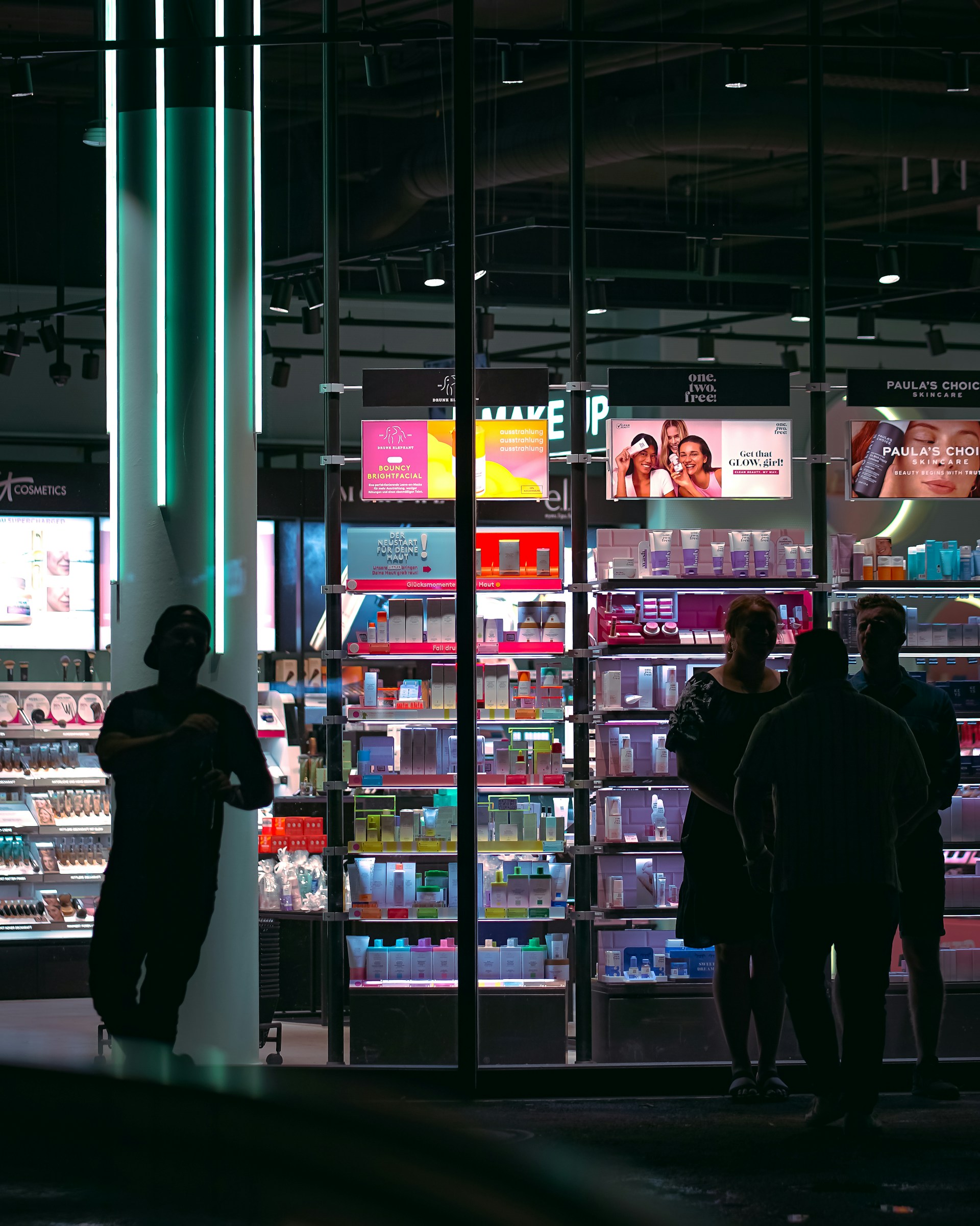

Global shocks and rising consumer expectations are forcing retailers to rethink how products are sourced, moved, and priced. Transparency and sustainability are no longer optional — they are part of competitive positioning.
Today’s landscape
Retailers are reducing dependency on single regions by diversifying suppliers and reshoring production. This is helping mitigate geopolitical risk and delays.
The road ahead
Supply chain resilience will become a strategic differentiator. Companies that secure diverse, local, and sustainable sources will be less vulnerable to shocks.
PESTLE: Political/Legal, Economic, Environmental
Horizon: Near- to mid-term (0–7y)
Strategic action: Build supplier networks in multiple geographies, invest in local partnerships, and adopt scenario planning for disruptions.
Today’s landscape
Customers expect visibility into where and how products are made. Regulations in Europe and the US are raising disclosure standards.
The road ahead
Sustainability data will be table stakes for brand trust. Those who fail to provide it risk both reputational and regulatory consequences.
PESTLE: Social, Political/Legal, Environmental
Horizon: Near-term (0–3y)
Strategic action: Adopt traceability tools like blockchain, publish transparent sustainability reports, and engage suppliers to meet compliance requirements.
Today’s landscape
Resale, rental, and repair platforms are booming, driven by Gen Z’s preference for sustainable consumption. Major retailers are piloting secondhand marketplaces.
The road ahead
Circular models will move from niche to mainstream, influencing inventory strategies and revenue models.
PESTLE: Environmental, Social, Economic
Horizon: Mid-term (3–8y)
Strategic action: Integrate resale and rental into core business, develop take-back programs, and measure lifecycle impact for consumer transparency.

AI is moving from back-office optimization to core decision-making in retail. From forecasting to automation, it is transforming how retailers operate and how consumers interact with brands.
Today’s landscape
Retailers are using AI to analyze real-time sales, weather, and social trends to predict demand more accurately. This reduces waste and improves margins.
The road ahead
Forecasting will become predictive and autonomous, adjusting production and logistics in real time.
PESTLE: Technological, Economic, Environmental
Horizon: Near- to mid-term (0–5y)
Strategic action: Deploy AI forecasting tools across supply chains, train staff to act on insights, and integrate sustainability factors into demand models.
Today’s landscape
Robotics and AI are automating warehouses, checkout, and last-mile delivery. Leading retailers are already testing cashierless stores and drone deliveries.
The road ahead
Autonomous operations will scale rapidly, lowering costs but raising workforce and regulatory challenges.
PESTLE: Technological, Social, Political/Legal
Horizon: Mid- to long-term (5–10y)
Strategic action: Pilot automation in logistics and in-store operations, reskill workers, and engage policymakers on labor and safety frameworks.
Today’s landscape
AI chatbots are evolving into digital shopping assistants, helping customers find products, compare options, and complete purchases.
The road ahead
Generative AI will redefine customer support, blending personalized recommendations with transaction support. Trust and transparency will determine adoption.
PESTLE: Technological, Social, Legal
Horizon: Near- to mid-term (0–5y)
Strategic action: Deploy generative AI carefully, train it on brand values, and ensure human-in-the-loop oversight to maintain trust.
